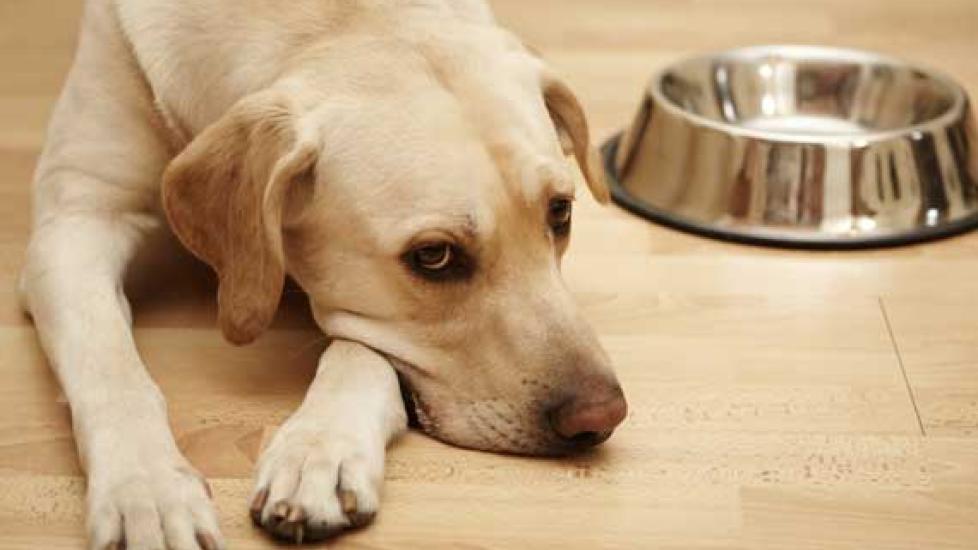Tips for Feeding Dogs with Megaesophagus
In the past, a diagnosis of megaesophagus was usually a death sentence. Severe cases of the condition make it virtually impossible for a dog to hold down food and water. In health, the esophagus is a muscular tube that pushes what is swallowed into the stomach. A “megaesophagus” is like a deflated balloon. It passively collects food and water until it can take no more, at which point the dog regurgitates all that he has just swallowed.
Megaesophagus can be a symptom of another disease (anatomical abnormalities, neuromuscular disorders, etc.), and in these cases, addressing the primary problem may also result in less regurgitation. Unfortunately though, most cases of megaesophagus are idiopathic, meaning that no underlying cause can be found. When a dog has permanent megaesophagus, whatever the reason, feeding management is the most important part of treatment.
The goal of feeding management is to get food and water out of the esophagus and into the stomach as quickly as possible. This is important for several reasons:
- Dogs obviously need to digest and absorb food and water to survive.
- Once food and water is in the stomach, it cannot be regurgitated. (Vomiting is still possible but not likely with megaesophagus.)
- Repeated episodes of regurgitation puts dogs at high risk for aspiration pneumonia.
As we have gained more experience with megaesophagus, we have been able to develop guidelines that work for many dogs:
- Feed multiple, small meals throughout the day.
- Feed a high quality, calorically dense food to limit the volume necessary to meet the dog’s nutritional needs.
- Prevent the dog from having access to food and water outside of monitored feeding times (e.g., on walks or by raiding housemate's bowls).
- Feed the dog in an elevated position. Dogs with mild megaesophagus may be able eat from a raised food bowl, ideally either seated or with their front feet on a block of some sort to increase the angle of their esophagus. In most cases, however, dogs with megaesophagus need to eat in a truly vertical position and remain upright for 20-30 minutes after a meal. This is best accomplished by training dogs to use a Bailey chair.
- When all else fails, a permanent feeding tube can be inserted into the dog’s stomach through which owners can administer food and water.
Exactly what to feed is still a matter of trial and error. Each patient seems to have an ideal food consistency, but this can vary greatly between individuals. Options to try include meatballs of canned or homemade dog food, a thin slurry of food and water, a thicker gruel, and thoroughly soaked kibble. When dogs are unable to keep down enough liquid to meet their needs, they can be supplemented with gelatin squares (often called “Knox blocks”) or subcutaneous fluids.
There’s no doubt that taking care of a dog with megaesophagus requires a truly dedicated owner, but if you fall into that category, the disease no longer has to be a death sentence.

Dr. Jennifer Coates
Image: Jaromir Chalabala / Shutterstock
